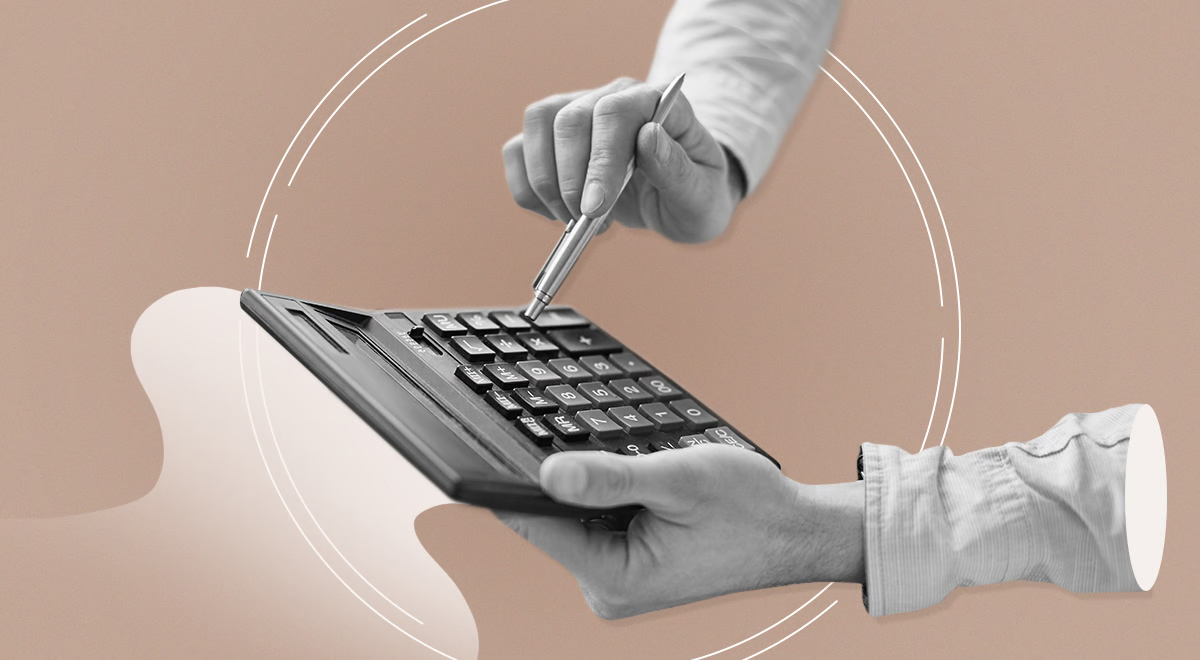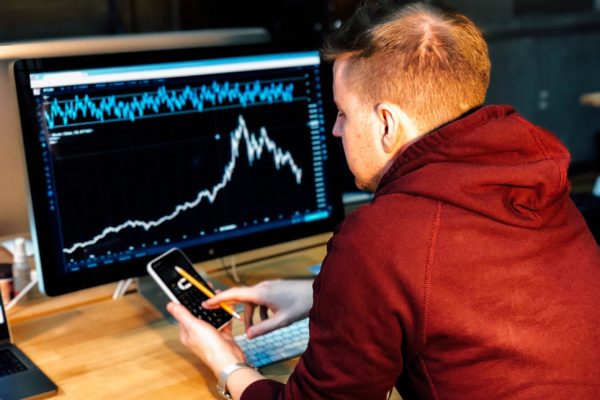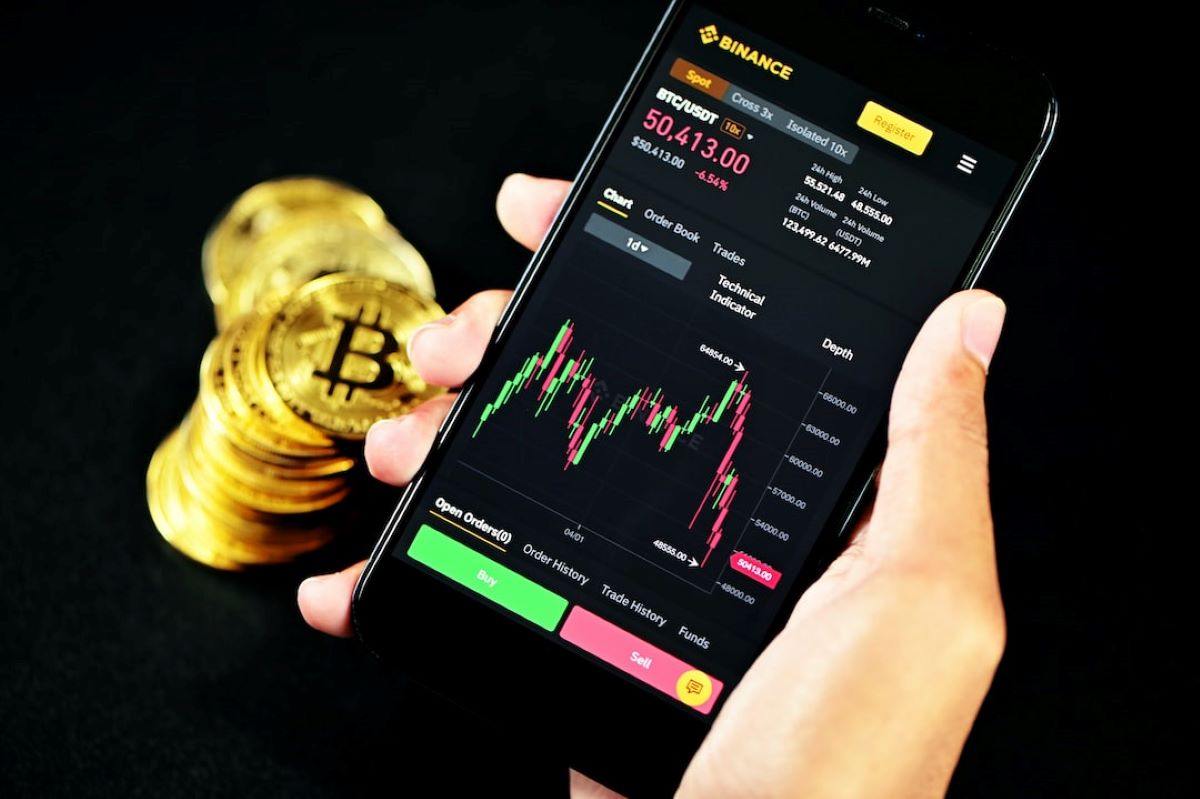

Finance
How Much Can You Make From Forex Trading
Published: December 22, 2023
Discover how much you can earn with forex trading and the potential financial opportunities in the world of finance.
(Many of the links in this article redirect to a specific reviewed product. Your purchase of these products through affiliate links helps to generate commission for LiveWell, at no extra cost. Learn more)
Table of Contents
- Introduction
- Understanding Forex Trading
- Factors Affecting Forex Trading Income
- Trading Strategies and Techniques
- Risk Management in Forex Trading
- Trading Psychology and Emotional Control
- Recommended Tools and Resources for Forex Trading
- Case Studies: Successful Forex Traders and Their Earnings
- Common Mistakes to Avoid in Forex Trading
- Conclusion
Introduction
Forex trading, also known as foreign exchange trading, has become increasingly popular in recent years. It offers individuals the opportunity to trade currencies and potentially earn profits from fluctuations in their values. With the advent of online trading platforms, anyone with a computer and an internet connection can participate in this global marketplace.
The allure of forex trading lies in its potential for significant returns. However, it is important to approach it with caution, as it also carries risks. Before delving into the world of forex trading, it is crucial to understand the basics, factors affecting income, trading strategies, risk management, and the emotional aspect of trading.
Forex trading is not a get-rich-quick scheme. It requires time, effort, and dedication to develop the necessary skills and knowledge to be successful in the long run. It is essential to have realistic expectations and be prepared for both wins and losses along the way.
In this comprehensive guide, we will explore various aspects of forex trading and discuss how much one can potentially earn from it. We will provide valuable insights into trading techniques, risk management strategies, trading psychology, and highlight successful forex traders. Additionally, we will outline common mistakes to avoid, ensuring that you approach forex trading with the right mindset and increase your chances of success.
Whether you are a beginner looking to explore forex trading or an experienced trader seeking to refine your skills, this guide will equip you with the necessary knowledge and tools to navigate the world of forex trading and maximize your earning potential. Let’s dive in and discover the exciting and potentially profitable world of forex trading.
Understanding Forex Trading
Forex trading involves buying and selling currencies in the global foreign exchange market. Unlike other financial markets, such as the stock market, forex operates 24 hours a day, five days a week, thanks to its decentralized nature. The main participants in the forex market are banks, financial institutions, corporations, governments, and individual traders.
Currencies are traded in pairs, such as EUR/USD (Euro/US Dollar) or GBP/JPY (British Pound/Japanese Yen). The first currency in the pair is called the base currency, while the second currency is the quote currency. The exchange rate represents the value of one currency in terms of another. For example, if the EUR/USD exchange rate is 1.20, it means that 1 Euro is equivalent to 1.20 US Dollars.
The goal of forex trading is to speculate on the direction in which the exchange rate of a currency pair will move. Traders can choose to buy (go long) a currency pair if they believe its value will appreciate, or sell (go short) if they think it will depreciate. The difference between the buying and selling price is known as the spread, which is how brokers make their profit.
Forex trading offers several advantages, such as high liquidity, allowing traders to enter and exit trades at any time. Additionally, the forex market provides various trading opportunities due to its sheer size and constant price fluctuations.
While forex trading can be highly profitable, it also carries risks. Factors like economic indicators, geopolitical events, and market sentiment can influence currency prices. Therefore, it is crucial to stay informed about global events and economic data that can impact currency movements.
To participate in forex trading, individuals need a forex trading account with a reputable broker. These platforms provide access to real-time currency prices, charts, technical analysis tools, and the ability to execute trades. It is important to choose a regulated broker with a user-friendly interface, competitive spreads, and reliable customer support.
As a beginner, it is advisable to start with a demo account to practice trading without risking real money. This allows you to familiarize yourself with the trading platform and develop your trading strategies. Once you feel confident, you can open a live account and begin trading with real funds.
In the next section, we will explore the various factors that can affect your income in forex trading, providing you with a deeper understanding of the dynamic nature of this market.
Factors Affecting Forex Trading Income
Forex trading income can vary greatly depending on several factors. Understanding these factors and how they impact your trading performance is essential for maximizing your earning potential in the forex market.
1. Market Volatility: Volatility refers to the magnitude and frequency of price fluctuations in the forex market. Higher volatility can present more trading opportunities, but it also carries increased risk. Traders often look for currency pairs with higher volatility to capitalize on price movements and generate greater profits.
2. Economic Indicators: Economic indicators, such as gross domestic product (GDP), inflation rates, employment data, and central bank announcements, significantly impact currency values. Traders closely monitor these indicators to anticipate market trends and adjust their trading strategies accordingly.
3. Geopolitical Events: Political instability, international conflicts, and major global events can have a profound impact on currency markets. Developments like Brexit, elections, and policy changes can lead to significant volatility and create both opportunities and risks for forex traders.
4. Interest Rates: Central banks’ decisions on interest rates can greatly influence currency values. Higher interest rates tend to attract international investors, increasing demand for the currency and potentially appreciating its value. Conversely, lower interest rates can result in currency depreciation.
5. Technical Analysis: Traders employ various technical analysis tools, such as chart patterns, indicators, and trend lines, to identify potential entry and exit points. Technical analysis can help identify patterns and trends, enabling traders to make informed decisions based on historical price data.
6. Fundamental Analysis: Fundamental analysis involves evaluating economic and financial factors that may impact currency values. By analyzing factors like GDP, trade balances, and monetary policies, traders can gain insights into the long-term performance of currency pairs and make informed trading decisions.
7. Risk Appetite: Risk appetite refers to an individual’s willingness to take on higher-risk trades in pursuit of larger profits. Traders with a higher risk appetite may engage in more aggressive trading strategies, while those with a lower risk appetite may prioritize capital preservation and choose more conservative approaches.
It is important to note that forex trading is inherently risky, and no strategy guarantees consistent profits. Successful traders combine a deep understanding of these factors with effective risk management strategies, disciplined trading plans, and continuous learning.
In the next section, we will explore various trading strategies and techniques that can be employed to enhance your chances of success in forex trading.
Trading Strategies and Techniques
Successful forex trading requires the implementation of effective trading strategies and techniques. These approaches help traders navigate the complexities of the market and increase their chances of making profitable trades. Here are some commonly used strategies:
1. Trend Following: This strategy involves identifying and trading in the direction of prevailing market trends. Traders utilize technical analysis tools and indicators to identify upward or downward trends and enter trades accordingly. The goal is to ride the trend for as long as possible to capture maximum gains.
2. Breakout Trading: Breakout trading involves entering trades when price breaks above or below a significant level of support or resistance. Traders aim to capitalize on the momentum generated by the breakout and ride the subsequent price move. Stop-loss orders are crucial in managing risk in breakout trading.
3. Range Trading: Range trading occurs when prices are trading within a defined range of support and resistance levels. Traders buy at support and sell at resistance, taking advantage of price fluctuations within the established range. This strategy requires careful monitoring of price levels and patience.
4. Scalping: Scalping is a short-term trading strategy that aims to profit from small price movements. Traders execute multiple trades within a short time frame, taking advantage of small price differentials. This strategy requires quick decision-making, strict risk management, and the ability to handle high trading volumes.
5. Carry Trading: Carry trading involves taking advantage of interest rate differentials between two currencies. Traders buy the currency with a higher interest rate and sell the currency with a lower interest rate. This strategy aims to profit from both the currency appreciation and the interest rate differential.
6. Fundamental Trading: Fundamental traders analyze economic factors, news, and geopolitical events to make trading decisions. They assess macroeconomic indicators, company earnings reports, and central bank policies to anticipate currency movements. Fundamental analysis helps identify long-term trends and potential market reversals.
7. Technical Analysis: Technical analysis involves the use of charts, patterns, and indicators to predict future price movements. Traders analyze historical price data and look for patterns that indicate potential entry or exit points. Popular technical indicators include moving averages, Bollinger Bands, and Fibonacci retracements.
It is essential to choose a trading strategy that aligns with your trading style, risk tolerance, and time commitment. Successful traders often combine multiple strategies and adapt their approach to different market conditions. Ongoing analysis, testing, and refinement of strategies are crucial for long-term profitability.
In the next section, we will discuss the importance of risk management in forex trading and how it can help protect your capital and minimize losses.
Risk Management in Forex Trading
Risk management is a crucial aspect of forex trading that is often overlooked by beginners. It involves implementing strategies to protect your capital and minimize potential losses. By managing risk effectively, traders can preserve their trading accounts and stay in the game for the long run. Here are key risk management techniques:
1. Position Sizing: Position sizing refers to determining the appropriate position size for each trade based on your account balance and risk tolerance. By allocating a small percentage of your capital to each trade, you can limit the potential losses from any single trade and protect your overall account balance. Experts generally recommend risking no more than 1-2% of your account balance on any given trade.
2. Stop-Loss Orders: A stop-loss order is a predetermined level at which a trade will be automatically closed to limit losses. It serves as a safety net and ensures that losses are controlled even if the trade goes against you. Setting a stop-loss order at a reasonable distance from your entry point based on market volatility and the trading strategy is essential for effective risk management.
3. Take-Profit Orders: In addition to stop-loss orders, take-profit orders are used to automatically close profitable trades at a target price. It helps lock in profits and prevent the temptation to hold on to winning trades for too long, potentially exposing yourself to increased risk. Setting a realistic take-profit level based on technical analysis or your trading strategy is vital.
4. Diversification: Diversifying your trading portfolio is an effective risk management technique. Instead of focusing on a single currency pair, consider trading multiple pairs across different asset classes and geographic regions. Diversification helps spread risk and reduces the impact of potential losses on your overall trading account.
5. Risk-Reward Ratio: The risk-reward ratio determines the potential reward relative to the risk taken in each trade. A favorable risk-reward ratio means that the potential reward is significantly higher than the potential loss. By consistently seeking trades with a positive risk-reward ratio, traders can tilt the odds in their favor and achieve long-term profitability.
6. Use of Leverage: While leverage can amplify potential profits, it also increases the risk of significant losses. It is crucial to use leverage responsibly and understand its implications. Having a thorough understanding of margin requirements, the concept of leverage, and its potential impact on your trading account is essential before engaging in leveraged trading.
7. Emotion Control: Emotions like fear and greed can cloud judgment and lead to impulsive trading decisions. Emotional control is a vital aspect of risk management. It is essential to stick to your trading plan, follow your predefined risk management rules, and avoid making impulsive trades driven by emotions.
Remember, no risk management strategy can completely eliminate the possibility of losses in forex trading. However, a disciplined approach to risk management is critical for long-term success. By minimizing losses and protecting your capital, you can ensure that you have the tools to continue trading and take advantage of profitable opportunities.
In the next section, we will delve into the psychological aspect of forex trading and discuss the importance of trading psychology and maintaining a disciplined mindset.
Trading Psychology and Emotional Control
Trading psychology plays a significant role in the success or failure of forex traders. The ability to control emotions and maintain a disciplined mindset is crucial for making rational trading decisions and achieving consistent profitability. Here are key aspects of trading psychology and strategies to improve emotional control:
1. Emotional Awareness: Understanding your emotions while trading is the first step towards emotional control. Recognize common emotions that arise during trading, such as fear, greed, and excitement. Being aware of how these emotions can affect decision-making empowers you to make more rational choices.
2. Develop a Trading Plan: Having a well-defined trading plan helps establish a framework for decision-making and reduces the influence of impulsive emotions. A trading plan should include entry and exit criteria, risk management guidelines, and a clear outline of your trading strategy. Regularly review and follow your trading plan to maintain discipline.
3. Practice Patience: Patience is a virtue in forex trading. Avoid the urge to enter trades out of impatience or fear of missing out. Wait for high-probability setups that align with your trading strategy. Patience allows you to make more informed decisions and increases the likelihood of profitable trades.
4. Risk Acceptance: Accept that trading involves risks and losses are a part of the journey. Maintain a realistic and balanced perspective on the potential outcomes of your trades. By understanding and accepting the inherent risks, you can trade with a clear mind and avoid emotional reactions to losses.
5. Avoid Overtrading: Overtrading is a common mistake driven by emotions. It refers to excessively entering trades, often due to fear of missing opportunities or chasing losses. Overtrading can lead to poor decision-making and increased losses. Stick to your trading plan and only take trades that meet your predefined criteria.
6. Learn from Mistakes: Mistakes are inevitable in forex trading. Instead of dwelling on losses or beating yourself up over them, view them as learning opportunities. Analyze your mistakes, identify patterns, and make adjustments to your trading approach. Continuous learning and self-improvement are key to long-term success.
7. Take Breaks and Practice Self-Care: Trading can be mentally and emotionally challenging. Take regular breaks from the screens to avoid burnout and maintain clarity. Engage in activities outside of trading that bring you joy and help reduce stress. Taking care of your physical and emotional well-being improves your decision-making abilities.
Developing strong emotional control and a disciplined mindset takes time and practice. It is an ongoing process that requires self-awareness and a commitment to continuously improve as a trader. By mastering your emotions and staying disciplined, you can navigate the ups and downs of forex trading more effectively and increase your chances of long-term success.
In the next section, we will explore recommended tools and resources that can assist you in your forex trading journey.
Recommended Tools and Resources for Forex Trading
Forex trading requires access to reliable tools and resources to help you make informed trading decisions and enhance your overall trading experience. Here are some essential tools and resources that can assist you in your forex trading journey:
1. Trading Platform: A robust and user-friendly trading platform is essential for executing trades, accessing real-time market data, and conducting technical analysis. Popular platforms include MetaTrader 4 (MT4) and MetaTrader 5 (MT5), which offer a wide range of features and customizable options.
2. Economic Calendar: An economic calendar provides information on key economic indicators, central bank decisions, and major events that can impact currency markets. By staying informed about upcoming events, you can plan your trades and anticipate potential market volatility.
3. Charting Software: Quality charting software is crucial for performing technical analysis. It allows you to analyze historical price data, identify patterns, apply indicators, and draw trendlines. Some popular charting platforms include TradingView, MetaTrader, and NinjaTrader.
4. News Feeds and Analysis: Access to timely and accurate news feeds and market analysis is essential for staying updated on market developments. Financial news websites, reputable forex news providers, and analysis from financial institutions can provide valuable insights into market sentiment and help you make informed trading decisions.
5. Forex Education and Training: Continuous learning is vital for improving your trading skills and knowledge. Take advantage of educational resources such as online courses, webinars, trading books, and tutorials to deepen your understanding of forex trading concepts, strategies, and analysis techniques.
6. Demo Accounts: Most reputable brokers offer demo accounts, allowing you to practice trading with virtual money. Utilize demo accounts to test strategies, practice risk management, and familiarize yourself with trading platforms without risking real funds.
7. Trading Communities and Forums: Engaging with fellow traders in trading communities and forums can provide valuable insights and support. It allows you to exchange ideas, discuss trading strategies, and learn from more experienced traders.
8. Trading Journals: Maintaining a trading journal can significantly improve your trading performance. It helps you track your trades, analyze your successes and failures, and identify areas for improvement. Documenting your trades can provide valuable insights into your trading habits and patterns.
9. Technical Analysis Tools: Utilizing technical analysis tools can enhance your ability to identify trends, patterns, and entry/exit points. Tools such as moving averages, trend lines, oscillators, and Fibonacci retracements can assist in making more informed trading decisions.
10. Risk Management Tools: Risk management calculators and tools are essential for determining appropriate position sizes, setting stop-loss orders, and calculating risk-reward ratios. These tools help you effectively manage risk and protect your trading capital.
Remember, choosing the right tools and resources is dependent on your individual trading preferences and needs. It is important to conduct thorough research, test different tools, and find the ones that are most suitable for your trading style and goals.
In the next section, we will explore case studies of successful forex traders and their earnings, providing real-world examples to inspire and motivate you on your trading journey.
Case Studies: Successful Forex Traders and Their Earnings
Examining the success stories of forex traders can provide valuable insights into their trading strategies, mindset, and earning potential. While individual results may vary, these case studies highlight the potential profitability of forex trading:
1. George Soros: George Soros is one of the most famous forex traders. In 1992, he famously shorted the British Pound, earning approximately $1 billion in profit during the “Black Wednesday” currency crisis. His successful trade was based on his analysis of economic and political factors impacting the Pound’s value.
2. Stanley Druckenmiller: Stanley Druckenmiller was George Soros’ partner and another highly successful forex trader. He made significant profits by anticipating and capitalizing on major market trends. Druckenmiller successfully navigated the global financial markets and earned substantial profits over his trading career.
3. Andrew Krieger: Andrew Krieger is widely known for his trading exploits at Bankers Trust. In 1987, he detected overvaluation in the New Zealand Dollar (NZD) due to market speculation. Krieger aggressively shorted the NZD and generated profits estimated to be around $300 million in a single trade.
4. Bill Lipschutz: Bill Lipschutz, a former currency trader at Salomon Brothers, is renowned for his ability to generate consistent profits through forex trading. He emphasized proper risk management, focusing on high-probability trades and cutting losses quickly. Lipschutz’s disciplined approach led to impressive earnings.
5. Kathy Lien: Kathy Lien is a well-known forex trader and author who applies both fundamental and technical analysis in her trading strategies. She has successfully authored multiple books and has built a reputation as a respected forex expert. Her expertise and trading acumen have contributed to her trading success.
It is important to note that these traders’ extraordinary earnings are not typical for all forex traders. They possess exceptional skills, years of experience, and a deep understanding of the forex market. Their successes highlight the potential profitability of forex trading but should not be seen as a guarantee of similar results for individual traders.
Forex trading earnings greatly depend on various factors, including trading strategies, risk management, market conditions, capital investment, and individual trading skills. It takes time and dedication to develop the necessary expertise and consistently generate profits in the forex market.
Aspiring forex traders can look to successful individuals like George Soros, Stanley Druckenmiller, Andrew Krieger, Bill Lipschutz, and Kathy Lien as sources of inspiration and guidance. Learning from their experiences and adopting their successful techniques can help traders improve their own trading performance and strive for greater profitability.
In the next section, we will discuss common mistakes to avoid in forex trading, helping you navigate potential pitfalls and increase your chances of success in this dynamic market.
Common Mistakes to Avoid in Forex Trading
Forex trading can be highly rewarding, but it also comes with risks. To increase your chances of success and protect your trading capital, it is important to avoid common mistakes that many traders fall victim to. Here are some key mistakes to steer clear of:
1. Lack of Proper Education: One of the biggest mistakes beginner traders make is diving into forex trading without sufficient knowledge. It is crucial to invest time in learning the fundamentals of the forex market, trading strategies, risk management, and technical analysis. Continuous education and practice are essential for long-term success.
2. Failure to Use a Trading Plan: Trading without a well-defined trading plan is a recipe for disaster. A trading plan outlines your goals, trading strategy, risk management rules, and guidelines for entering and exiting trades. Without a plan, you are more likely to make impulsive and emotional decisions that can lead to losses.
3. Overtrading: Overtrading, or excessively entering trades, can be detrimental to your trading results. FOMO (Fear of Missing Out) and chasing losses often drive overtrading. It is important to stick to your trading plan, be patient, and only trade when there are high-probability setups that align with your strategy.
4. Lack of Risk Management: Failing to implement proper risk management is a surefire way to blow up your trading account. Every trade should have a stop-loss order to limit potential losses. Additionally, position sizing, using appropriate leverage, and diversifying your trades are crucial risk management techniques to protect your capital.
5. Emotional Trading: Allowing emotions, such as fear, greed, or impatience, to dictate your trading decisions can lead to poor outcomes. Emotional trading often results in impulsive trades, chasing losses, or exiting winning trades too early. Maintain emotional control, follow your trading plan, and make decisions based on rational analysis rather than emotions.
6. Neglecting Fundamental Analysis: While technical analysis is important, overlooking fundamental analysis can be a grave mistake. Economic indicators, geopolitical events, and news can significantly impact currency movements. Staying informed about major economic releases and news events helps you make more informed trading decisions.
7. Lack of Record Keeping: Failing to keep a trading journal is a missed opportunity for growth and improvement. A trading journal allows you to review your trades, identify patterns, and analyze your trading performance objectively. It helps you learn from your mistakes, track your progress, and refine your trading strategies.
8. Blindly Following Others: Relying solely on tips or signals from others without understanding the underlying rationale can be risky. Each trader has their own unique trading style, risk tolerance, and goals. It is important to develop your own understanding of the market and make independent, informed trading decisions.
Avoiding these common mistakes requires discipline, patience, and continuous self-improvement. Successful forex trading takes time, practice, and a commitment to learning from both successes and failures. By learning from the mistakes of others and avoiding these pitfalls, you can increase your chances of becoming a profitable forex trader.
In the concluding section, we will summarize the key points discussed and emphasize the importance of maintaining a realistic perspective and a lifelong commitment to learning and improving as a forex trader.
Conclusion
Forex trading presents an exciting opportunity to potentially earn profits from the global currency market. However, it is important to approach forex trading with a realistic mindset, understanding the risks involved and the effort required to succeed. Throughout this guide, we have explored several key aspects of forex trading that can significantly impact your earning potential.
Understanding the basics of forex trading is essential, including how the market operates, how to analyze currency pairs, and how to execute trades. We have discussed the factors that can affect your trading income, such as market volatility, economic indicators, and geopolitical events. Implementing effective trading strategies, risk management techniques, and maintaining emotional control are vital for long-term success.
We have also highlighted recommended tools and resources that traders can utilize, including trading platforms, economic calendars, charting software, and educational materials. Learning from the experiences of successful traders can provide inspiration, but it is important to recognize that individual results will vary.
To increase your chances of success, it is crucial to avoid common mistakes such as insufficient education, lack of a trading plan, emotional trading, and neglecting risk management. By staying disciplined, continuously learning, and adapting your strategies to changing market conditions, you can improve your trading performance and maximize your earning potential.
Remember, forex trading is not a guaranteed path to instant riches. It requires dedication, practice, and a commitment to ongoing education and self-improvement. By approaching forex trading with a realistic perspective and implementing the strategies and techniques outlined in this guide, you can increase your chances of achieving long-term profitability.
As you embark on your forex trading journey, always remember to trade responsibly, manage your risk effectively, and take the time to develop your expertise. With patience, discipline, and a continuous thirst for knowledge, you can navigate the dynamic world of forex trading and work towards achieving your financial goals.














